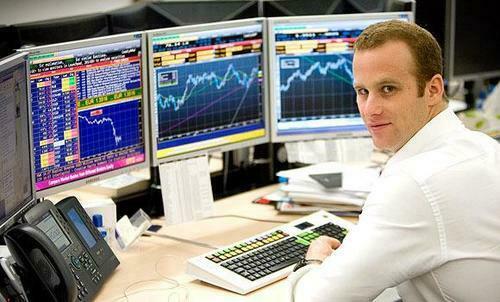Andurand Sees $200 Oil By Year-End As Biden Sends SPR To Record Lows
Pierre Andurand, founder of Andurand Capital Management, has had a turbulent few years (as we have most recently noted here (up 154% in 2020) and here (worst year ever in 2018). And now the energy complex wunderkind sees a path for crude oil to get to $200 by the end of the year as historically tight markets struggle to ramp up production and replace lost supply from Russia.
On the latest episode of Bloomberg’s Odd Lots podcast, Andurand warns that Russian oil will likely be out of the market even if Putin agrees some sort of imminent ceasefire with Ukraine.
“I don’t think that suddenly they stop fighting, the oil comes back. It’s not going to be the case. The oil’s going to be gone for good,” he said.
“We’ll have to live with higher prices to keep demand down, for it to be treated a bit more as a luxury product and also to accelerate the energy transition.”
He estimates some 4 million barrels per day have been taken out of circulation as a result of Russia’s invasion of Ukraine and subsequent restrictions on doing business with the Putin government. While releasing oil from strategic petroleum reserves could help boost supply in the short-term, it’s likely that the energy industry won’t be able to increase capacity to fully offset the lost barrels.
And to put that in context, whatever President Biden’s cunning SPR-Release plan is meant to be doing… it’s not working…
Source: Bloomberg
That wasn’t supposed to happen!
While overall levels of the Strategic Petroleum Reserve is at its lowest level since 2002; in terms of actual days supply, we are very near record lows of just 33 days (based on implied demand)…
Source: Bloomberg
Andurand concluded that tighter supplies of commodities will “actually cap the type of economic goals we will be able to have.”
“A lot of people just assume, you know, in their economic model that we can have as much of a commodity as we want. It’s just a question of demand. But no, this time it’ll be supply constraint.”
As he details in the podcast, supply is so tight that some market participants might struggle to deliver physical crude even as spot prices soar.
“So for example, let’s say during the Covid times when the demand suddenly collapsed 20% overnight, we built a lot of inventories over a short period of time. And, you know, the infrastructure of the market, you know, was not built to withstand those kind of events of losing 20% of the world’s demand overnight. So the level of empty storage actually could only take one and a half months of this really low demand before all the tanks were full. And so in April 2020, when all the tanks were full, basically if there’s still some production that needs to be moved. Nobody can buy that oil and that’s where prices can go negative.
And as you say, when we’re in the opposite scenario where inventories are very low and there are places in the world where a delivery of certain contracts, such as Cushing in Oklahoma for WTI, where the tanks are all empty and there’s no oil in those tanks anymore. If somebody is long futures and tries to take delivery of oil at that place and that point in time, well, nobody can deliver, and then you can go to any price. So generally what happens is that’s where the kind of so-called speculators are in the middle to help make the price move enough so that we’re never in a situation where either the tanks are full or either the tanks are empty.
So it means, somehow it means, you know, that prices have not gone up fast enough and for long enough to either bring more extra supply or actually reduce demand before we run out of inventories. And that’s where sometimes people wonder, you know what is the role of speculators? I mean, it’s actually price discovery and also giving the right signals to producers and consumers in order not to run out of storage capacity or not to run out of inventories, because then prices can go anywhere…”
Ultimately, Bloomberg notes that Andurand sees the $200 level where we start to get actual demand destruction, and a potential balancing of the market.
“I think, like close to $200 a barrel — so much higher than today. I feel like there’s no demand destruction at $110 a barrel and we’ll have to go significantly higher before demand can go down by enough. But that’s also assuming there’s no government mandate and some kind of confinement, where let’s say two days a month, we are not doing anything. And we are in confinement for two days a month. I mean, there could be some solutions like that to bring demand down, but if there’s no government mandate, then I think that around $200 oil will be enough to bring demand to balance the market.”
While $200 seems like an extremely high number, Bloomberg notes that others in the industry also think it’s possible. In January, commodity trader Doug King said a barrel could hit that level within five years. Nigeria’s oil minister has also said it could get that high before falling back into the $150 range.
Tyler Durden
Thu, 03/17/2022 – 18:05

